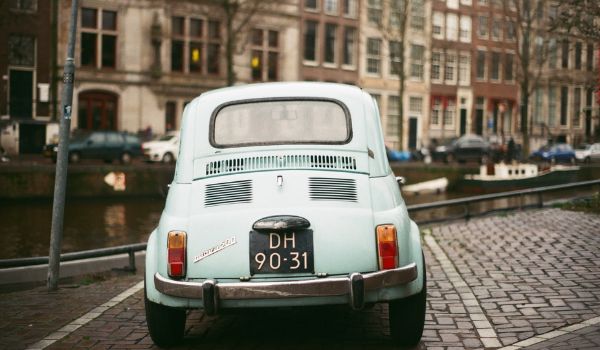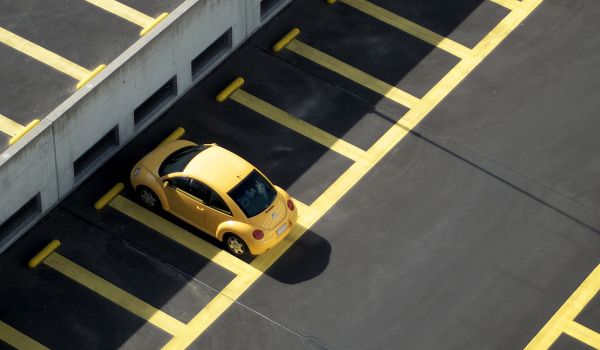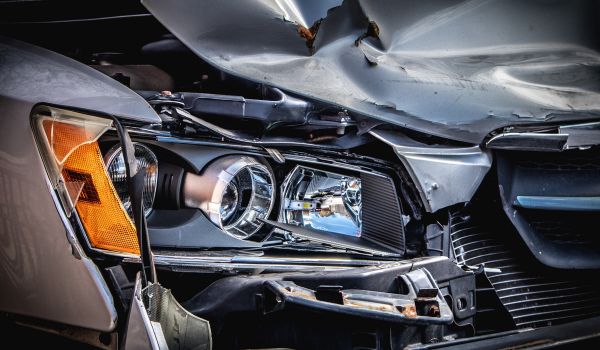The Ultimate Guide to Car Insurance in The Netherlands
Categories: Finance
The Dutch road network is now one of the safest in Europe, and while accidents are infrequent, they do happen! If you buy a car and want to drive in the Netherlands legally, you must take out car insurance. Traversing this subject can be complicated, but getting things right is crucial for your budget and daily life.
To make things as simple as possible, and with the help of UnitedConsumers, we’ve put together this complete guide to car insurance in the Netherlands. In it, we will cover everything from insurance types and laws, to costs, extras, and how to start a claim.

Car Insurance in The Netherlands – What’s The Deal?
In the Netherlands, car insurance is mandatory for all road users. You need to take third-party insurance at a minimum to be able to take your car out for a spin. Unlike in some other countries, car insurance in the Netherlands covers the vehicle and not the driver. This means that while the named person on the insurance is legally responsible for the car, anyone can drive it. This is useful to know if a family friend or colleague needs to make a quick trip to the supermarket or an airport pickup!
As in other countries, there are several different insurers in the Netherlands. An excellent option for getting the right deal is using a price comparison website and all the available resources that come with it. UnitedConsumers provide prices from several different insurers, including Allianz, ASR, Nationale Nederlanden and Rhion. They also offer detailed breakdowns of each insurance type, additional extras, and extra resources to help you make the right decision and even get a discount in the process.

Types of Car Insurance in the Netherlands
As in most other countries, there are three distinct levels of car insurance available in the Netherlands. All of them allow you to drive legally, but what level you choose depends on how much coverage you need the policy to provide.
Third-Party Liability (WA)
This basic insurance policy allows you to drive in the Netherlands legally. Third-party insurance provides coverage in the event of an accident in which you are at fault. Essentially, it only covers damage caused by your car to other parties in the event of an accident, and not the other way around. It also includes damage to property and injuries to other parties.
Third-party insurance is usually by far the cheapest option when considering car insurance. As it doesn’t cover damage done to your car by others, it’s usually the best option if the value of your car is low, or you don’t drive very far or very often.
Extended Liability (WA + Beperkt Casco)
In addition to basic coverage, this level of insurance also covers your vehicle against things beyond your control. For example, extended liability insurance protects your car against theft, fire, and vandalism. In addition, some policies extend to other events.
All-Risk (WA + Full Casco)
Otherwise known as comprehensive insurance, this option fully covers your car against damage caused by your actions or those of other parties. All-risk policies often have some minor exceptions, but generally, they are comprehensive in their coverage. Being the most expensive option, going for an all-risk policy is best if the value of your car is high, it is new, or the repair costs are too high to pay out of pocket.

How Much Does it All Cost?
Most car insurance policies in the Netherlands are paid monthly. Still, some insurers offer you the ability to pay your premium annually. Your premium will depend on several different factors, such as your age, your driving history and the type of vehicle being insured. In the Netherlands, the “no-claims” system is also used. This means you will receive discounted insurance premium rates based on your driving years without making an insurance claim.
Some Dutch insurers do recognize no claims carried over from other countries, but this is often at the discretion of the individual insurer. On the flip side, you’ll also see the results of a poor driving record reflected in your premium, with things such as frequent insurance claims, traffic legal charges or accidents caused by you harming your premium quote.
An effective way of lowering your premium amount is by increasing the excess amount for your policy (deductible or own risk). This is the amount you will pay in the event of an accident. Almost all standard policies will have a mandatory excess amount, but you can opt to adjust it. For example, if you set your excess fee at €100, you will be required to pay €100 against any damage, with the rest of the amount covered by the policy. The higher you set your excess fee, the lower your monthly or annual premium will be. Be aware, though, that by increasing your excess fee, you are increasing the amount you will have to pay in the event of a claim!
Like other types of insurance, it pays to shop around with car insurance in the Netherlands. Finding the best deal isn’t dependent on your details, the car, or the current situation. You’ll often find ways to lower costs through discounts and special offers by comparing car insurance in the Netherlands. You’ll often receive improved rates if you’re a new customer or switch insurers. For instance, with UnitedConsumers you will always get a minimum discount of 15% on your car insurance.
After the consumer compares their car insurance, they get a free summer check of their car provided by our partner Euromaster. In this summer check, they check the car on battery, brakes, engine oil and 6 more points.
The UnitedConsumers comparison tool will also provide information such as customer reviews, additional extras, and costs, coverage details, and options for excess fees and lowering costs.
Additions and Extras
On most policies, you will also be given the option to select various additional coverage and extras. These can be useful for insuring specific items or for providing breakdown coverage. You can also often protect your no claims bonus in the event of an accident or have the option of a hire car if needed.
Selecting additional benefits will increase your premium, so making the right decision is essential. Consider what you’re likely to need based on your circumstances and how you plan to use your car. Detailed cost comparison charts can be handy, as they provide insight into exactly what the extras cover and how much the option will cost.

Making a Claim
You won’t ever have to submit an insurance claim in an ideal world. But, if the worst should happen, it’s pretty simple. You’ll need to take down all of the details of other parties involved, such as names, insurance details and vehicle details. It also helps to take pictures, if possible.
Your insurance provider will require you to fill in an insurance report form, usually found on their website. You’ll then need to submit your claim with your insurer. Some insurers allow you to do this via an online portal, while others require you to contact them by phone. Your insurer will then guide you through the rest of the process, including damage reports, valuation of the vehicles involved and injury reports.
The process may change slightly for serious accidents where the police are involved, but your insurer will talk you through any specifics.
Read Also: International Health Insurance in the Netherlands
Get Out on The Road
So, now you have our complete guide to car insurance in the Netherlands to hand, you’ll be out on the road in no time! For expert advice, discounts, and easy price comparisons, check out UnitedConsumers. Whether you’re planning a move to the Netherlands or are looking to save money on an existing premium, UnitedConsumers is more than just a comparison site – they’re a fantastic resource for all things insurance. UnitedConsumers is more than just a car insurance comparison site – they help consumers save money on fixed examples, such as health insurance, electric and gas, mobile contracts and fuel.
